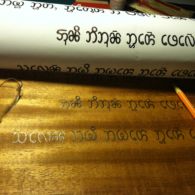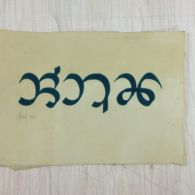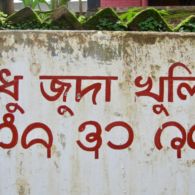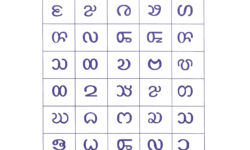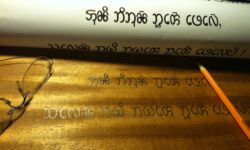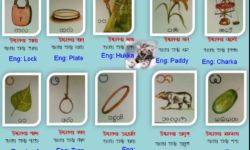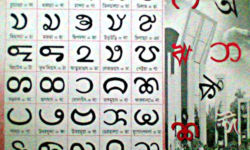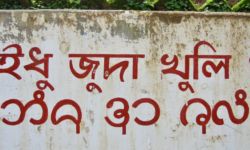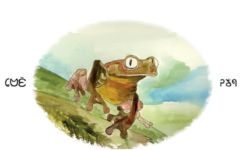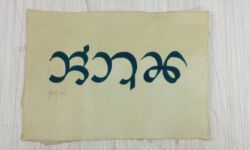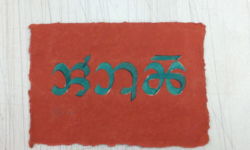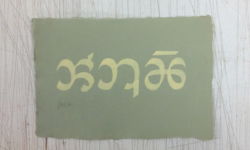Profile
Endangered alphabets are intimately connected to a culture’s loss of respect and self-respect. A sad example of that long, slow loss is Chakma.Some 300,000 Chakma live in the Chittagong Hill Tracts of Bangladesh, making them the largest ethnic community in the region. A further 175,000 live across the border in India.
The Chakma had, and have, their own language and script, which derived from the Brahmi script of ancient India.
For roughly 500 years, the Chakma people and their king were treated with considerable respect by the Arakanese, the Mughals, and the East India Company; even when the Chakma were defeated, they retained a great deal of autonomy, and, as the British Governor of Chittagong said, “We recognized no right on our part to interfere with their internal arrangements.” Even in the crackdown following the Sepoy Mutiny of 1857, the territorial rights of the Chakma Raja were fixed by proclamation.
When Bengali Muslims tried to seize territory in the Chittagong Hill Tracts — a theme that will return shortly — the Chakmas and other ethnic groups living in the area appealed to the British for protection, given that they and the Bengalis did not share a religion, language, or ethnicity. Under British India, in fact, the Hill Tracts were a separate administrative area that enjoyed a considerable degree of self-rule.
In the event of Indian independence, they were assured, the Chittagong Hill Tracts would be split off separately. Such did not turn out to be the case. Even though the people of the Hill Tracts were 98% non-Muslim, the region was given to Pakistan — a decision that was disastrous for the Chakma, and other ethnic groups of the Hill Tracts. After the bloody civil war that led to the birth of Bangladesh, the new Bangladeshi constitution denied full citizenship to any non-Bengalis, and insisted on a one-language policy that made Bangla the sole spoken language and script.
Many Chakma had already migrated to India, especially after the Kaptai Dam project flooded 54,000 acres, some 90% of which had been farmed by Chakmas. This displacement continued when the Bangladeshi government began a policy of granting tracts of land traditionally farmed by the indigenous inhabitants of the region to Bengali settlers.
The result was a period of virtual civil war in the region, with the military siding mainly with the settlers. Even following the cease-fire in 1997, the Hill Tracts remains a militarized region, with access denied to journalists and human rights workers. Regular massacres, rapes, murders and destruction of villages have been documented.
Official education in the Hill Tracts is in Bangla, resulting in a catastrophic dropout rate among all the region’s indigenous peoples, and steady cultural erosion among the Chakma, few of whom can still read their own script.
Two closely related scripts, Chak and Ka-Pat or Tanchangya, are used by neighboring indigenous peoples living on both sides of the Myanmar-Bangladesh border.
You can help support our research, education and advocacy work. Please consider making a donation today.
Links
General Script, Language, and Culture Resources
- Omniglot
- Wikipedia
- Unicode (PDF)
- Chakma Tutorial Video
- Another Chakma Tutorial Video
- Chakma Learning Website
- Background to Script and Culture (In Bangla)
- More Background to Script and Culture (In Bangla)
- Even More Background to Script and Culture (In Bangla)
- Scriptsource
- Chakma Publications
- Online Chakma video lessons
- Music video in Chakma
- Article about digitization of Chakma script
